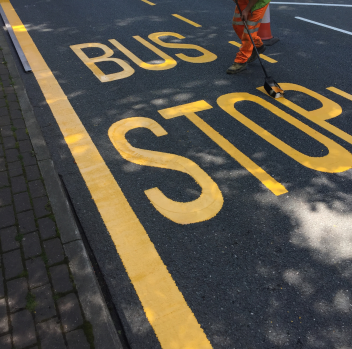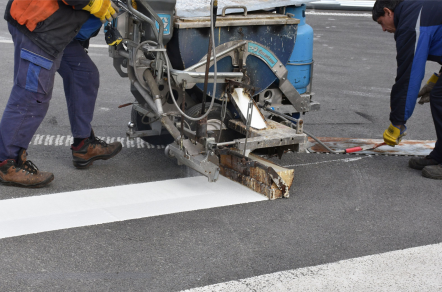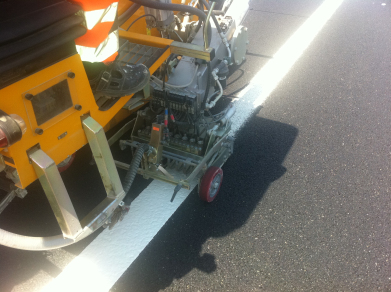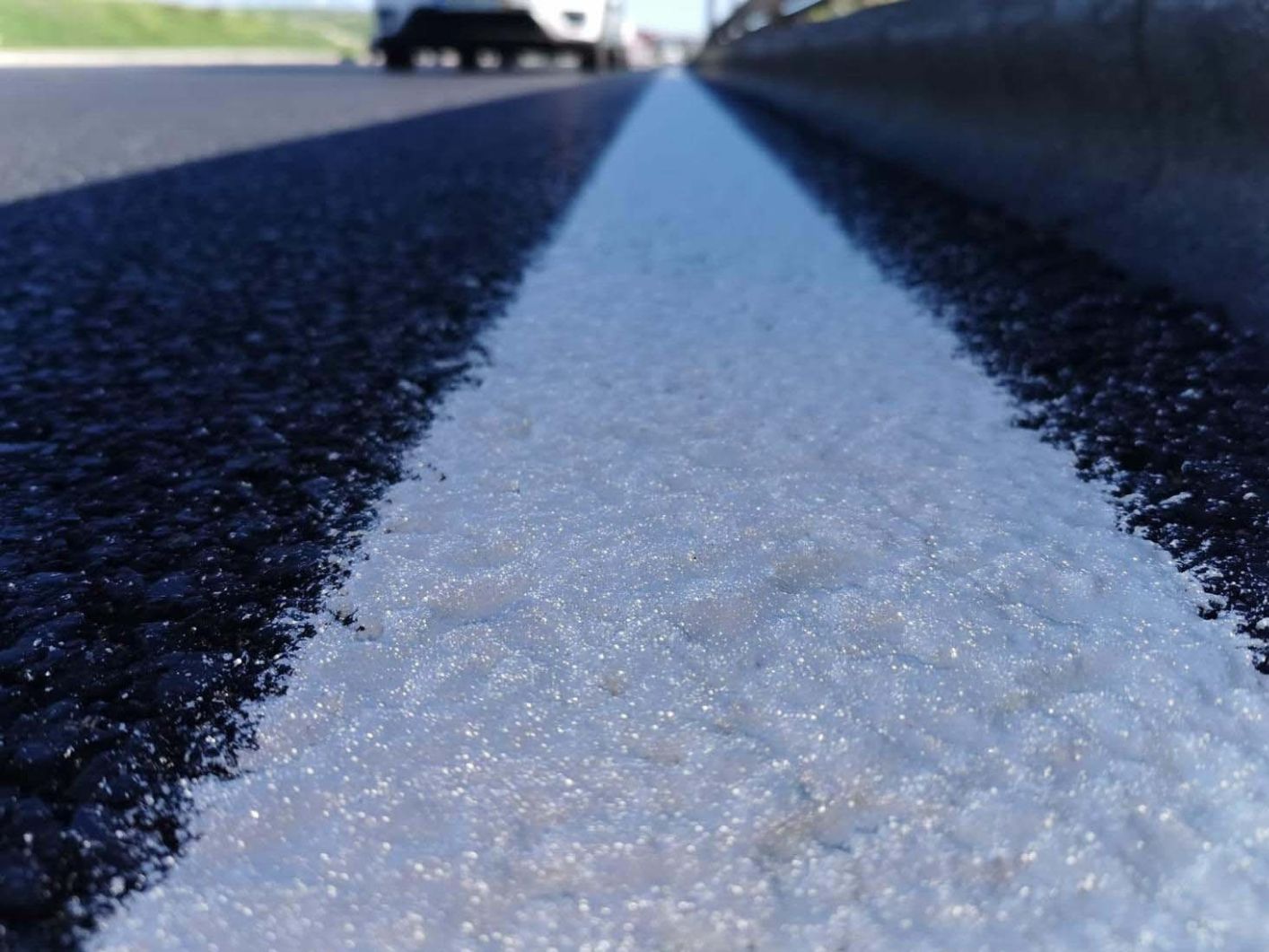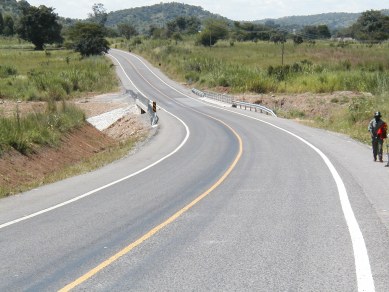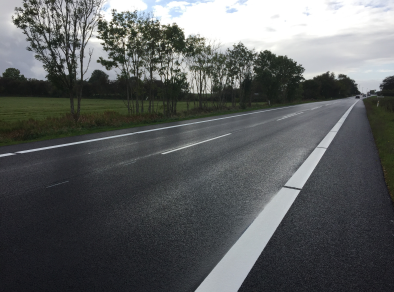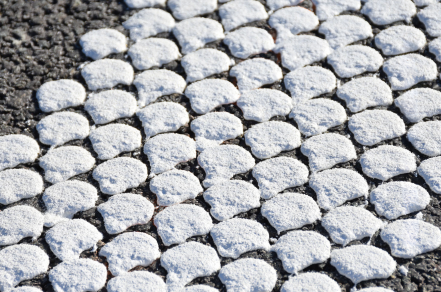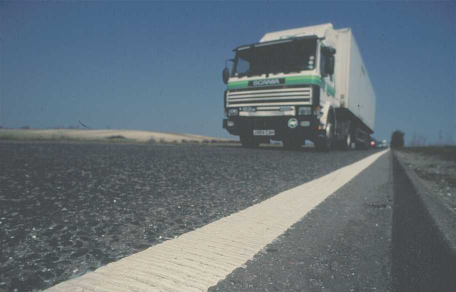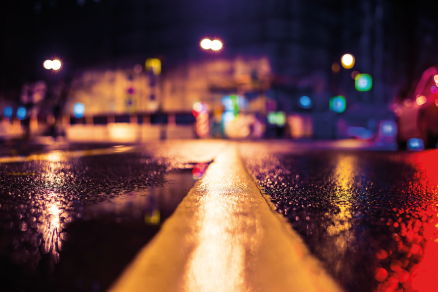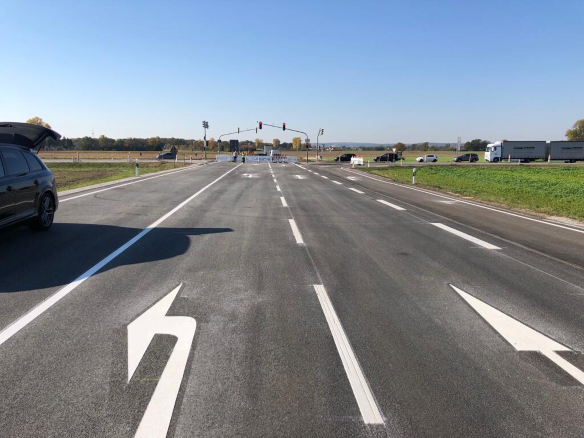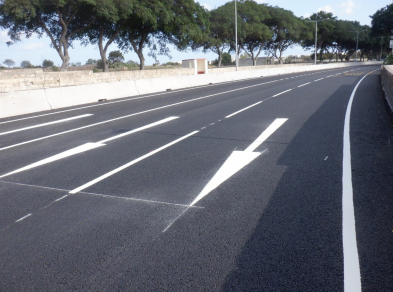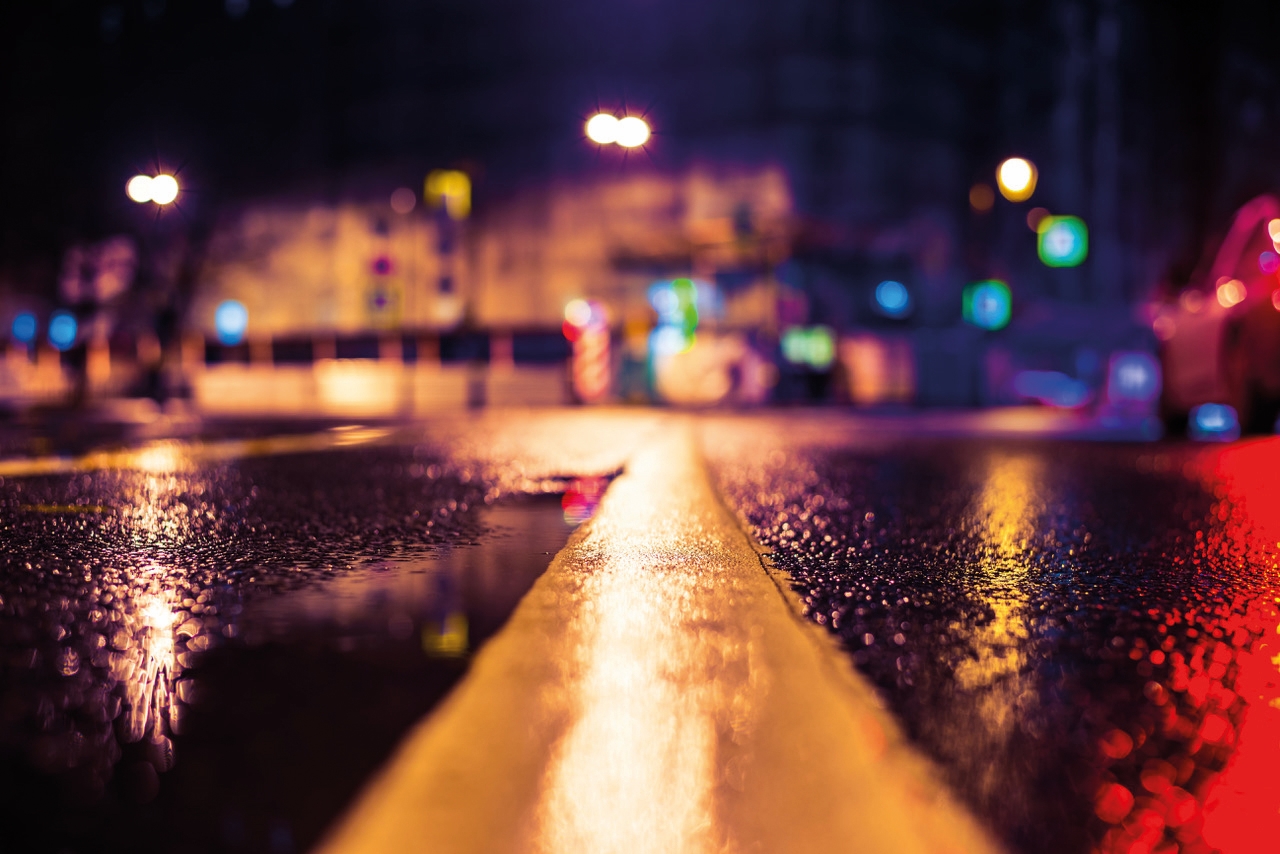Hot applied thermoplastics
Hot applied thermoplastics provide durable, high-visibility road markings. Applied at high temperatures, they resist heavy traffic and bond firmly, hardening with approximately 60 seconds. Our range is made with bio-based resins, for improved sustainability and longer product lifecycles.
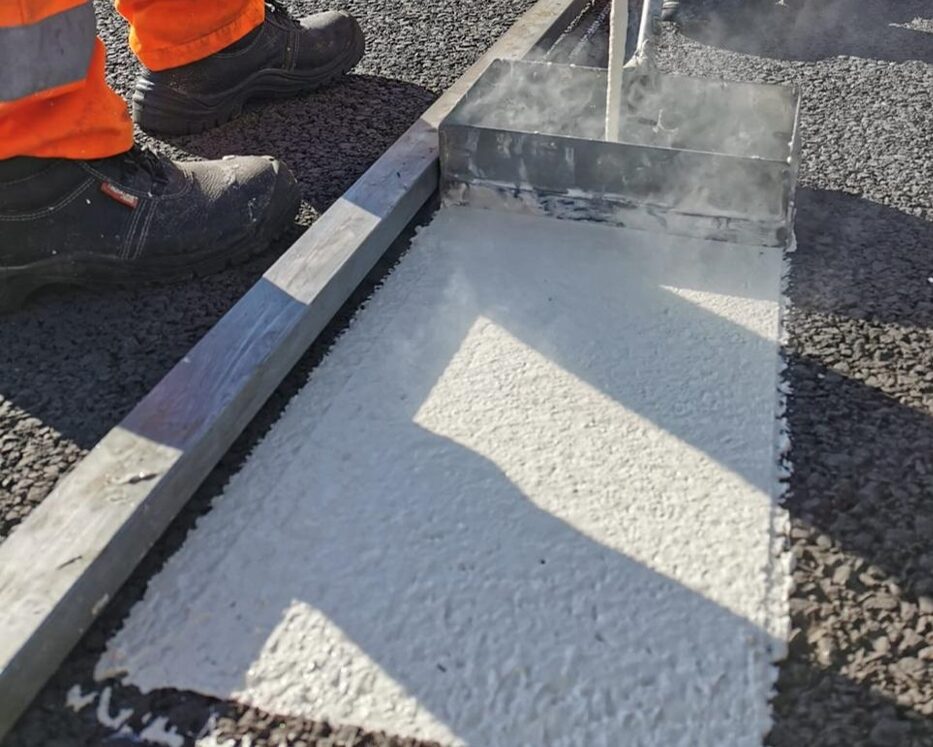
Overview of hot applied thermoplastics
Reliable, vibrant road markings with superior durability and eco-friendly materials.
Premium quality and versatility
Manufactured in the UK in the largest thermoplastic plant in the world, our hot applied thermoplastic products boast a portfolio that includes both reflective and non-reflective options, known for their excellent durability. Across the range, we have a large assortment of certifications to serve various regional markets.
Efficient performance across the world
Our hot applied thermoplastics are known for their durability and versatility. They set quickly, making them perfect for high traffic areas that can’t afford lengthy downtime or road closures. These markings provide long-lasting visibility and superior performance across all weather conditions.
Tailored solutions for every need
Our product range offers both economical and premium options to suit different project budgets and includes variations to accommodate diverse global climate conditions. These versatile thermoplastics are designed for various applications including screed, spray, machine extrusion, and profiled markings, ensuring they meet a wide range of project requirements. Additionally, we provide grades with enhanced skid resistance, retroreflectivity, and service life, ensuring safety and performance on all road surfaces.
Hot applied thermoplastics
We have a wide variety of products on offer, each tailored to different performance and climatic requirements.
All of our thermoplastics use 91% bio-based resins, combining high performance with greener ingredients for improved sustainability.
We operate the world’s largest thermoplastic plant, combining high-capacity production with a vast product range to meet diverse customer needs.
Have a question? We’re here to help
Contact our friendly team for quick help and answers to all your questions. Whether you need information, guidance, or support, we’re always happy to assist!

FAQs
-
What are hot applied thermoplastics?
Hot applied thermoplastics are thermoplastic materials that become fluid when heated to the proper application temperature and, when removed from its heat source, form a hard, abrasion-resistant pavement marking.
-
What are thermoplastics made of?
Thermoplastic materials are 100% solid, environmentally and user safe. They are comprised of multiple components:
- Binders: Consisting of plasticizers and resins that provide toughness, flexibility, and adhesion while holding all the components together.
- Pigments: Provide colour and opacity.
- Fillers: Such as calcium carbonate, which are designed to add bulk.
Many of our hot applied thermoplastics also contain glass spheres that provide continuous, bright nighttime retroreflectivity.
-
What different methods of application can be used for hot applied thermoplastics?
There are various different methods that can be used to apply hot applied thermoplastics. These include:
- Screed: The material is deposited onto the road surface through a flat die without significant pressure. This method produces a smooth, even layer and is commonly used for transverse markings.
- Extrusion: The material passes through a four-sided die, of which three sides are in direct contact with the pavement surface. This method provides maximum adhesion to the surface due to the fact that the material is shielded from air and wind.
- Profiled: The material is applied in raised patterns or ridges, typically by interrupted extrusion. This creates a textured surface that enhances visibility, especially in wet conditions.
- Spray: The material passes through a spray gun under pressure. This type of application provides maximum mechanical adhesion of the pavement marking as it forces the material into the irregularities of the pavement surface.
-
What temperature can hot applied thermoplastics be applied at?
The temperature at which hot applied thermoplastics can be applied depends entirely on the products.
Our technical data sheets give specific data on each of our products, including their application temperatures.
-
Are hot applied thermoplastics reflectorised?
Yes, the vast majority of hot applied thermoplastics in our range are reflectorised. This ensures improved visibility for drivers and other road users.
Guidemaster® is our range of non-reflectorised hot applied thermoplastics, suitable for application in areas where there is Class 1 street lighting.
Troubleshooting guide
-
What should I do if there are bubbles in the lines?
Bubbles in the lines may appear as below:
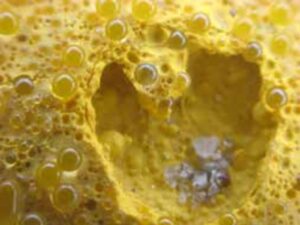
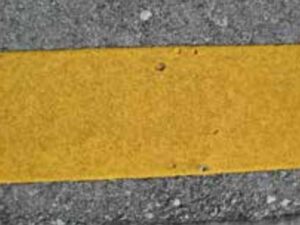
This can occur for a number of reasons:
- If bubbles appear right away, this may be because of moisture on the surface.
- If primer has been used, this may be because the primer has not cured for long enough.
- If bubbles appear after a long period of time, it may be due to evaporating water in the area getting trapped under the line.
-
What should I do if there are gaps or pulls in the lines?
Gaps or pulls in the lines may appear as below:
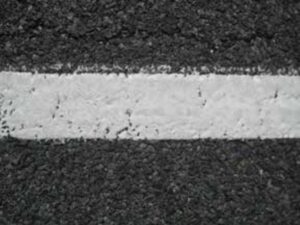
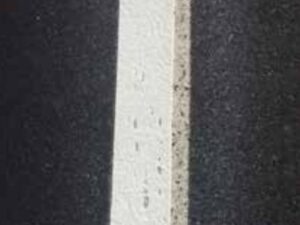
This can occur for a number of reasons:
- The material is too cool.
- The striping speed is too fast.
- The material is too thick.
-
What should I do if there is no adhesion or bulging are the front of the line?
If there is no adhesion or bulge at the front of the line, it may appear as below:
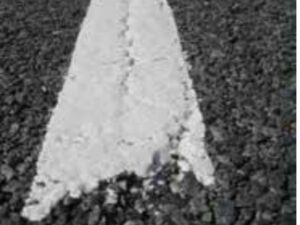
This can occur for a number of reasons:
- The material or ribbon gun is too cold.
- The striping speed is too fast.
-
What should I do if there are drag marks or pits in the line?
Drag marks or pits in the line may appear as below:
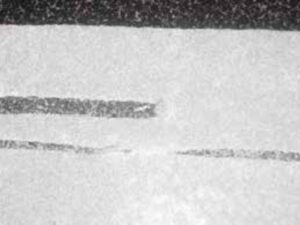
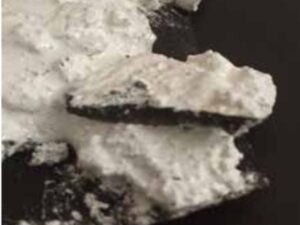
This can occur for a number of reasons:
- Lumps or unmixed materials have passed through the filter.
- Not letting the material in the melter heat and mix for long enough.
- Charred material in the filter or line breaking loose.
- Rocks or lumps in die.
-
What should I do if there are crumbly edges or a rough line surface?
Crumbly edges or a rough line surface may appear as below:
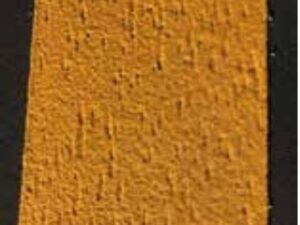
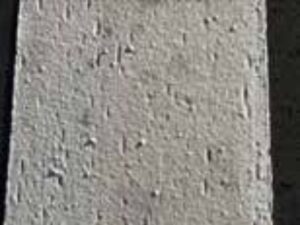
This can occur for a number of reasons:
- The material temperature is too low.
- The material is overheated or scorched.
- There is moisture in the road.
-
What should I do if there are jagged line endings or drips between skips?
Jagged line endings or drips between skips may appear as below:
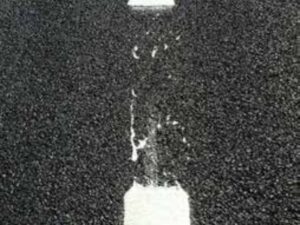
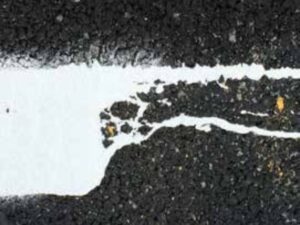
This can occur for a number of reasons:
- Ribbon gun/die not closing properly.
- Obstruction in ribbon gun/die.
-
What should I do if the line is wavy?
A wavy line may appear as below:
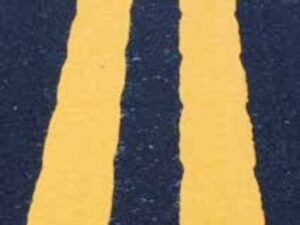
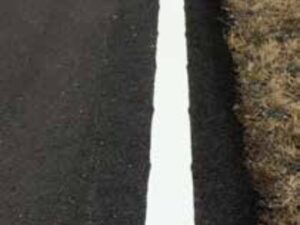
This can occur for a number of reasons:
- Driving too fast.
- Carriage wheel(s) are flat or do not have enough air.
- Road surface undulations.
- The kettle is empty or the pump is starving for material.
- The pump is sucking air or not enough material pressure.
-
What should I do if the line is damaged?
A damaged line may appear as below:

This can occur for a number of reasons:
- There has been a loss of beads.
- There is low reflectivity.
- There has been snowplough damage.
- There has been an auto accident.
- Metal was dragged across the line.
-
What should I do if the thermoplastic is losing its bond with asphalt?
A thermoplastic losing its bond with the asphalt may appear as below:
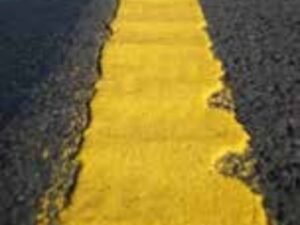
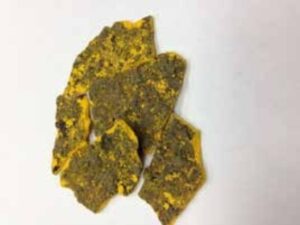
This can occur for a number of reasons:
- The thermoplastic has been applied to a wet or dirty surface.
- The thermoplastic has been applied on top of fog seal.
-
What should I do if there is bond loss?
Bond loss may appear as below:
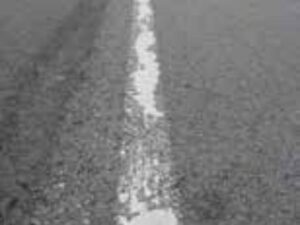
This can occur for a number of reasons:
- The thermoplastic has been applied at temperatures below recommended levels.
- The thermoplastic has been applied at ambient air temperatures below recommended levels.
- The surface was too cold during application.
- There were heavy snowplough events.
-
What should I do if spray material is coming out of the gun in lumps?
Spray material coming out of the gun in lumps may appear as below:
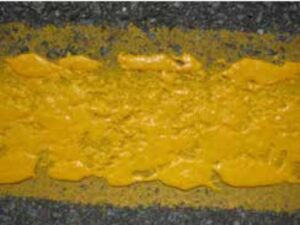
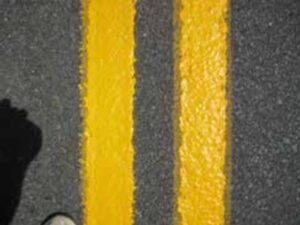
This can occur for a number of reasons:
- The material is too cold.
- There is low atomising air pressure.
- There is a restriction in atomising air system of the spray gun.
-
What should I do if there is discolouration or poor reflectivity?
Discolouration or poor reflectivity may appear as below:
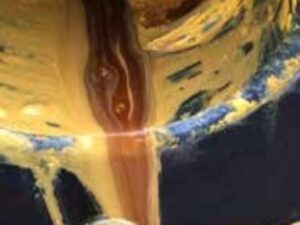
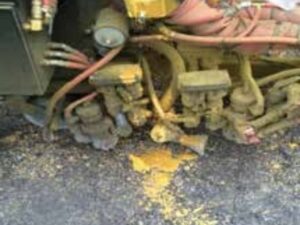
This can occur for a number of reasons:
- There has been a heat transfer from oil leaking into the kettle.
- A broken material line allowing heat transfer from oil into the thermoplastic.
-
What should I do if the spray application is uneven?
Uneven spray may appear as below:
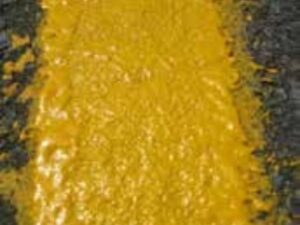
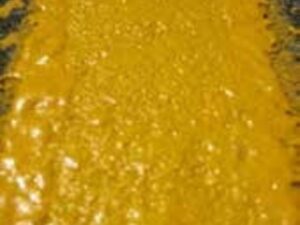
This can occur for a number of reasons:
- There is a restriction in the spray gun not allowing the material to exit the gun evenly.
- There is a restriction in the atomising air system or there is not enough air flow to the gun tip.
-
What should I do if there are burned or unmelted materials in the filters or screen baskets?
Burned or unmelted materials in the filters or screen baskets may appear as below:
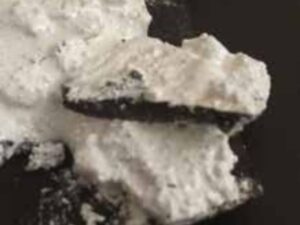
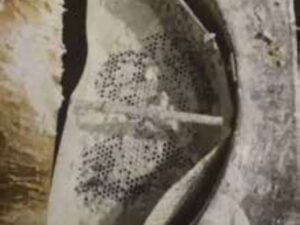
This can occur for a number of reasons:
- The melter was not agitated early enough during start-up.
- The melter’s agitator is not spinning fast enough to mix material or keep it from scratching.
- The burner system has not calibrated the hot spot in the kettle.
-
What should I do if there is poor reflectivity?
Poor reflectivity may appear as below:
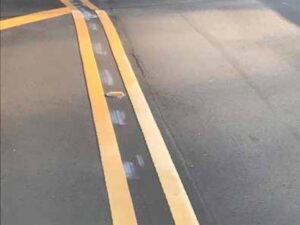
This can occur for a number of reasons:
- There are no beads on the line.
- The weather conditions (i.e. wind) affected the bead application.









